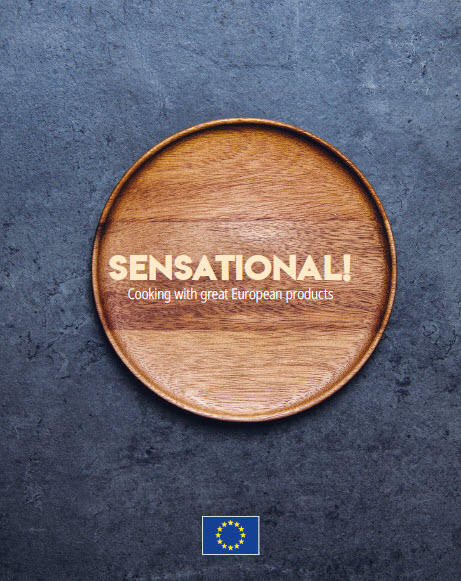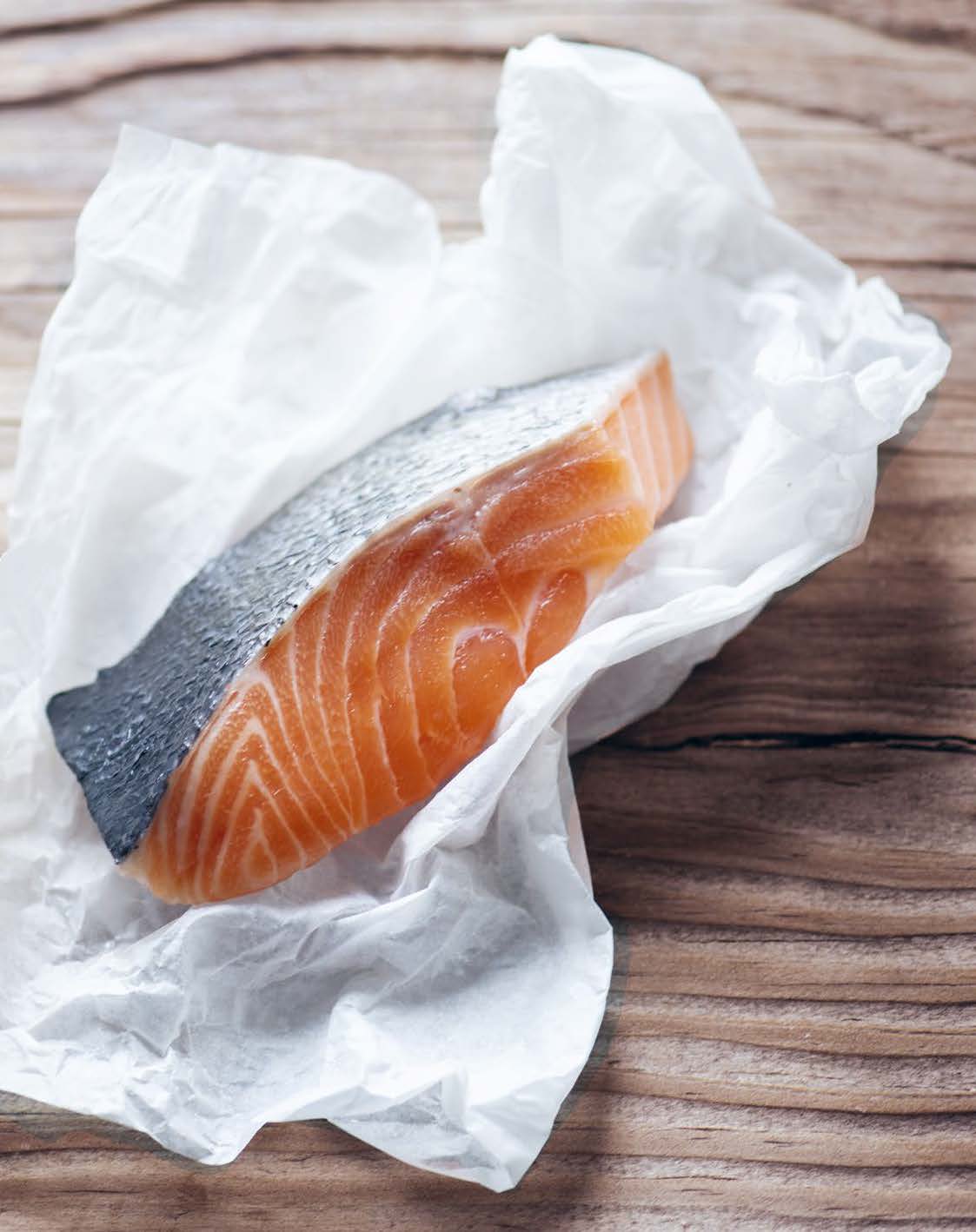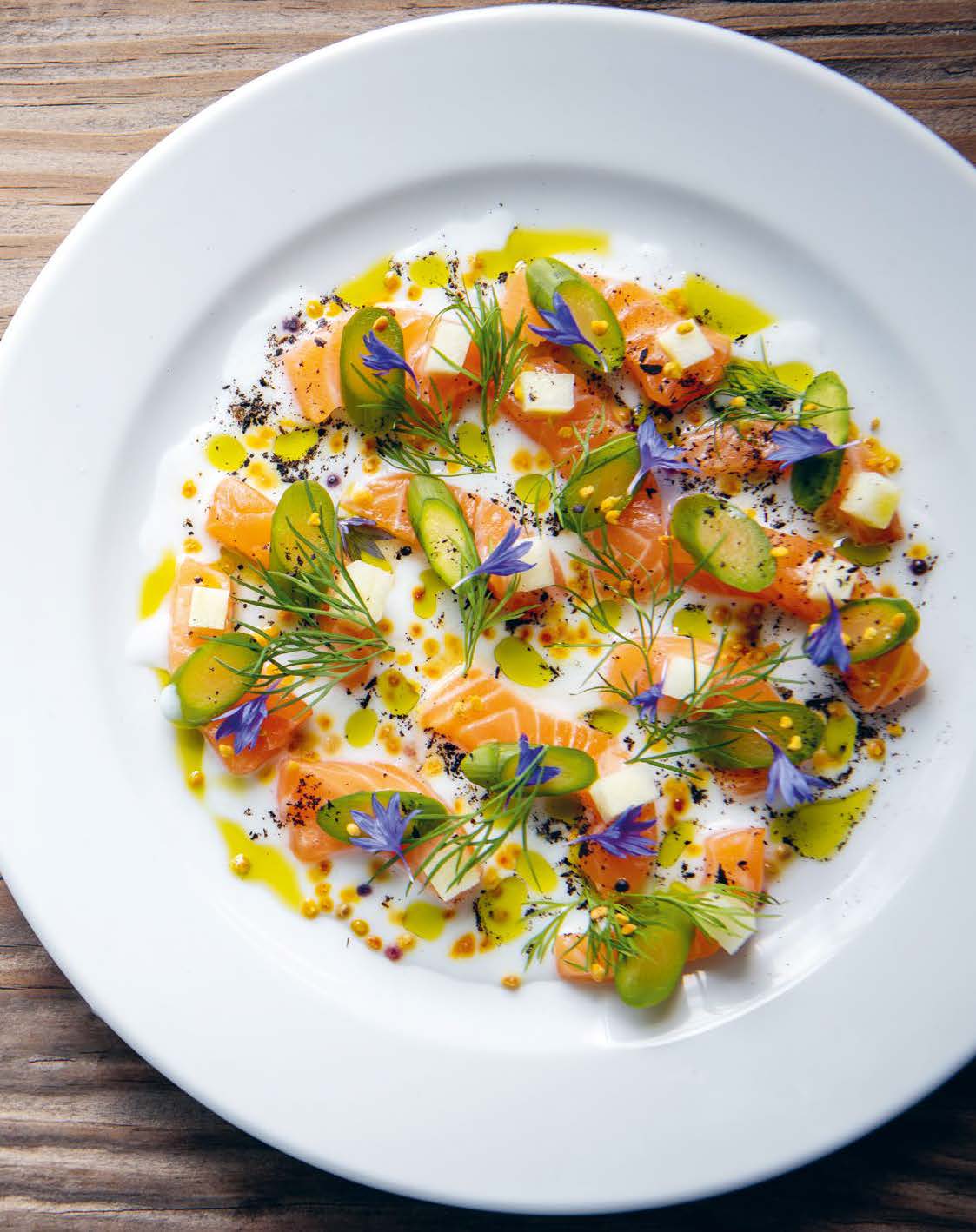Cookery Feature - Sensational Cooking with Great European Products
 By chance the other day, I happened on an impressive EU cookbook Sensational! Cooking with Great European Products. It outlines the history, purpose and value of the PDO (Protected Designation of Origin) and PGI (Protected Geographical Indication) labels, and illustrates the point with some lovely recipes by talented chefs (not necessarily the most famous, which is no harm), created around unique products with geograph¬ical indications from their own country. In Ireland’s case Grainne O’Keefe, chef at Dublin’s Clanbrassil House, uses Clare Island Salmon (PDO) from Co Mayo and Oriel Sea Salt from Co Louth in a pleasingly simple and very beautiful dish (see below).
By chance the other day, I happened on an impressive EU cookbook Sensational! Cooking with Great European Products. It outlines the history, purpose and value of the PDO (Protected Designation of Origin) and PGI (Protected Geographical Indication) labels, and illustrates the point with some lovely recipes by talented chefs (not necessarily the most famous, which is no harm), created around unique products with geograph¬ical indications from their own country. In Ireland’s case Grainne O’Keefe, chef at Dublin’s Clanbrassil House, uses Clare Island Salmon (PDO) from Co Mayo and Oriel Sea Salt from Co Louth in a pleasingly simple and very beautiful dish (see below).
For full explanation of the labels an extract is given after the recipe below, but key points include the importance of protecting culinary traditions and diversity; protecting products from imitation; and that these internationally respected labels enable producers to command a fair price - while other benefits include assisting in the responsible development of food tourism.
At a time when interest in food is at an all time high and many far less significant books get vast amounts of publicity, it’s surprising that a quality publication with a vital message - and published on behalf of us all - seems to have become available rather than be launched with the fanfare it deserves.
The EU does a lot of good deeds by stealth but its citizens need to know about them and this is another reminder, perhaps, that far better communications and PR are essential to keep us informed and engaged. In Ireland we’re lucky to have keen media interest in all things EU, but that may not be the case everywhere - and, even here, most of us would be hard pushed to name our own MEPs… Surely a ‘Sensational!’ press release should have gone out to all relevant media throughout the bloc, and to countless others too, especially schools and colleges. Maybe it just bypassed me but there’s no obvious sign of a press release anywhere and - although free, and easy for anyone to access once you know where it is - ‘Sensational!’ seems to be more of a ‘best kept secret’ than a ‘must-read’.
Finding a list of our protected products is also a challenge - an online search is more likely to come up with something on Wikipedia than an official site. However the criteria and application process are easier to find, also the current list of applicants - which, unexpectedly, includes a high proportion from China, due to a recent agreement ‘protecting around 200 iconic European and Chinese agri-food names against imitation and usurpation’.
What is certain though, is that we have too few protected products in Ireland. When searching online for our current list I found a 2003 Irish Times article by Darina Allen highlighting our reluctance to engage…Sounds familiar? Yet it is in everyone’s interest to raise awareness and encourage applications to protect our special Irish food and drink products. This cookbook, once discovered, may well help to engage more producers, chefs and keen home cooks. I would have liked to see a map of all of the EU states, in addition to the individual member country faintly outlined at the top of each recipe, and a lighter, warmer touch in the editing department would have added to its appeal. However, allowance must be given for the number of languages offered - perhaps the informational sections need to be edited by a native of each country, who has a real feel for the local situation and understands the subtleties. But it’s a handsome, and very welcome, piece of work all the same - and, while a hard copy version doesn’t seem to be available at the moment, it’s free to download.
CLARE ISLAND SALMON
-IRELAND-
 Each spring, one of the largest planned migrations takes place along the coasts of Ireland. Thousands of salmon are transferred into cages off the coast of Clare Island, where they spend the next 2 years being cared for.
Each spring, one of the largest planned migrations takes place along the coasts of Ireland. Thousands of salmon are transferred into cages off the coast of Clare Island, where they spend the next 2 years being cared for.
The fish receive a special diet featuring exclusively natural products and are protected against storms and predators. The production area around Clare Island has several specific hydrographic features that generate strong currents. This prevents the development of parasites, and therefore avoids the need for many chemical treatments. The harvesting of Clare Island salmon is very similar to organic farming in that respect. After 2 years the salmon are strong and large enough for consumption. This salmon has firm flesh with a low fat content, and slightly resembles wild salmon in terms of morphology. The salmon is preferably eaten warm, for example grilled with vinegar sauce and asparagus, but it is also possible to prepare a delicious cold marinated version, as in the recipe featured below. Clare Island salmon has enjoyed PGI status since 1999. In her recipe, Chef Grainne O’Keefe uses Oriel Sea Salt, a product with a PDO. This is the only non-oxidised mineral sea salt in the world.
GRAINNE O’KEEFE, CHEF AT CLANBRASSIL HOUSE:
 ‘Growing up, I was never exposed to fine dining. I had never tasted foie gras or truffles. But I did know from a young age that I wanted to work with food. I used to watch a lot of cooking shows and borrowed cookbooks from the library. I was fascinated by how chefs worked. There was no doubt in my mind that I would become a chef.’
‘Growing up, I was never exposed to fine dining. I had never tasted foie gras or truffles. But I did know from a young age that I wanted to work with food. I used to watch a lot of cooking shows and borrowed cookbooks from the library. I was fascinated by how chefs worked. There was no doubt in my mind that I would become a chef.’
The young Grainne O’Keefe is now chef at Clanbrassil House. She is hailed as one of Ireland’s most promising chefs. In the restaurant, the charcoal grill is the centrepiece of the kitchen. All the main courses, some of the starters, and even desserts are prepared on the grill.
‘I love cooking salmon on the grill,’ Grainne says. ‘There is something deeply satisfying about cutting into a perfectly cooked salmon. I spend a lot of time experimenting with the barbecue, slow-smoking products like sweetcorn, preparing monkfish with miso and so on. The Oriel Sea Salt is an ideal finishing touch, the finale of a grilled dish. You can use it with both vegetables and meat or, as in this case, with fish.’
Clanbrassil House – www.clanbrassilhouse.com
CLARE ISLAND SALMON WITH BONITO VINEGAR, SORREL, APPLE, DILL AND BEE POLLEN
 INGREDIENTS (1 portion)
INGREDIENTS (1 portion)
1 spear green asparagus
250g Clare Island salmon
50ml bonito vinegar (or any type of rice vinegar)
10ml lemon juice
Oriel Sea Salt
black pepper
50g sorrel (or spinach)
1 apple (Granny Smith)
50 gdill
10ml buttermilk
2g black sesame seeds
5g bee pollen (optional)
1 cube horseradish, grated
Rub the asparagus with salt and let it sit overnight.
Remove the skin and bones from the Clare Island salmon.
Thinly slice the salmon and mix in a bowl with the vinegar, 5 ml lemon juice, sea salt and black pepper. Allow to rest for 10 minutes.
Mix the sorrel, apple, dill and 5 ml lemon juice in a blender and press the mixture through a fine sieve.
Dress the salmon on a plate and garnish with the apple-sorrel mixture, buttermilk, sesame seeds, asparagus and bee pollen.
Complete the dish with freshly grated horseradish.
ABOUT WHY WE HAVE A EUROPEAN DESIGNATION OF ORIGIN LABEL
Europe has an immensely rich and diverse culinary history and heritage. The reason for this, of course, is not just because Europe is such a vast continent. It is also thanks to the traditions that are passed down from generation to generation. Europe also has an unprecedented geographical diversity; from the fells of Finnish Lapland to the desert lands in Murcia and from the Alpine highlands to the Irish Sea. All these different terroirs give rise to a large and diverse culinary culture. People from all over the world travel to Europe, not just to admire its many artistic and cultural treasures but also to savour the local cuisine.
From Danish cheese to French plums, from Bulgarian sausage to Portuguese vegetables, many of these products are registered as geographical indications (GIs). This European Union quality scheme protects the names of specific products due to their unique characteristics, linked to their geographical origin as well as traditional know-how. It reflects the diversity of Europe and its rich and varied culinary heritage. Chefs appreciate these unique characteristics which reflect the place where the products are made and the age-old production techniques used. They are increasingly popular with consumers not only in Europe but also in other parts of the world.
By 1992, the European Union had already decided to protect several products names. This decision stemmed from the desire to better preserve culinary heritage and to offer farmers and producers a fairer income. European products that are awarded a quality label always feature unique characteristics. These are typical for the region in which they are grown or prepared and, most of all, they are of excellent quality. In 2012, the quality schemes were introduced that establish and safeguard this designation of origin or traditional method of production:
PDO (Protected Designation of Origin): products in this category have a clear and undisputed link with the location where they are produced. This means that all aspects of the production process, the preparation and processing, must take place in the specific region to which the protection applies.
PGI (Protected Geographical Indication): this label explains the connection between the region and the name of the product. Contrary to products with a PDO label, it requires one part of the entire process (at least one step) to take place within the area to which the geographical designation applies.
In this book, renowned European chefs have suggested how unique products with geographical indications from their country can be in-corporated in a dish. They also share their love and passion for the products they grew up with and which have made them so successful. The products from their local regions, which exemplify craftsmanship and excellence. We absolutely need to make sure that these products continue to enjoy their protected designation of origin. It is the only way to preserve and guarantee their quality, both now and in the future.





There are currently no comments
Leave a comment
Not a member? Register for your free membership now!
Or leave a comment by logging in with: